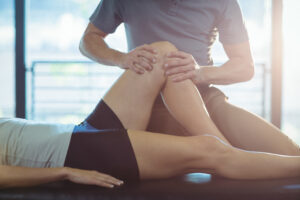The beauty of the step-up
It is rare that we focus solely on one exercise but today, it is all about the step-up.
It could be some light, quick movements as you use the step-up to get a great cardio workout. Maybe it is some hefty, high step-ups that really work the gluten and quads. The step-up in all its forms is a great exercise for the lower body.
Everyday movement
At its most basic level, the step-up is a great functional strength exercise that replicates a movement that most of us do every day – stepping up and down.
The step-up is also a good way to exercise a group of muscles, rather than isolating just one muscle. The calves, the quads, the hamstrings, the glutes and the hip flexors all get a good workout. The core also comes into play as it works hard throughout the movement to stabilise the body.
The step-up will help shape and tone leg muscles and it is also a fantastic means to strengthening the lower body. If a person has knee problems, careful use of the step-up will help improve the strength of the muscles, tendons and ligaments around the knee joint. For any rehabilitation use of exercise do check with a medical expert first.
The basic step-up
Starting at floor level facing a stable raised surface, such as a heavy box or a step/stairs, step one foot and then the other completely onto the raised surface. Then step down again. That is one step-up completed. You can continue to lead with the same leg for a set number of repetitions or you can alternate which leg you lead with.
If you are a beginner, start with this basic step-up. Aim for 3 sets of 20, alternating the leading leg after you have completed 10 step-ups.
Take the following technical points into consideration:
- Keep the hips facing straight onto the direction of travel – don’t twist as you step.
- Use strength rather than momentum – feel the muscles working as you lift upwards
- Use the working leg to do the movement, avoid pushing off the non-leading leg
Using variants to increase the workload
To increase the intensity of the workout, you can change one of four variants.
Increase the height of the step so you are working the muscles harder to lift your bodyweight higher.
Add a weight by carrying a barbell on your shoulders or holding dumbbells as you step. This will make your muscles work harder then when you just use your bodyweight as resistance.
Increase the tempo at which you step. This is good for increasing your cardio fitness.
Raise the number of repetitions in each set to increase the intensity of the workout.
To further increase the intensity, you can add a one-legged hop at the top of the step-up, this puts an extra workload on your calf muscle in particular.
With all variations, make sure you are choosing a work-out that suits your own level of fitness and ability.
For advice on this exercise or any other fitness-related advice, speak to one of the experienced staff in the Outlooks Gym or Free Weights Gym.
The true beauty of the step-up lies in its versatility. It is an exercise that you really can do anytime, anywhere. For example, if you are waiting for a train, there are always a set of steps where you can knock out a few step-ups. If you are working away, then the hotel stairs offers a makeshift gym for you to do a set of step-ups. Just five minutes of rapid stepping up and down will soon clear your mind, raise your heart-rate and give you a burst of energy for whatever there day brings.









